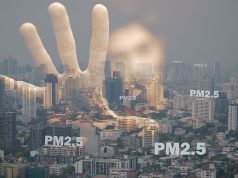Emphysema assessed quantitatively using CT imaging and lung function for patients in multiple U.S. cities
FRIDAY, Aug. 16, 2019 (HealthDay News) — Long-term exposure to ambient air pollutants, especially ozone (O3), is significantly associated with worsening emphysema, according to a study published in the Aug. 13 issue of the Journal of the American Medical Association.
Meng Wang, Ph.D., from the University of Washington in Seattle, and colleagues assessed the longitudinal association of ambient O3, fine particulate matter (PM2.5), oxides of nitrogen (NOx), and black carbon exposure with progression of emphysema. Data for 7,071 study participants in the Multi-Ethnic Study of Atherosclerosis Air and Lung Studies (July 2000 through November 2018) were included.
The researchers found a median percent emphysema of 3 percent at baseline that increased a mean of 0.58 percentage points per 10 years. During follow-up, mean ambient concentrations of PM2.5 and NOx, but not O3, decreased substantially. There was a significant association between ambient concentrations of PM2.5, NOx, O3, and black carbon at study baseline and greater increases in percent emphysema per 10 years. There was also a significant association between ambient O3 and NOx concentrations, but not PM2.5 concentrations, with greater increases in percent emphysema. Only ambient O3 concentrations at baseline and during follow-up were significantly associated with a greater decline in forced expiratory volume in one second per 10 years.
“We were surprised to see how strong air pollution’s impact was on the progression of emphysema on lung scans, in the same league as the effects of cigarette smoking, which is by far the best-known cause of emphysema,” a coauthor said in a statement.
Several authors disclosed grant funding from government agencies and other organizations and financial ties to pharmaceutical companies.
Copyright © 2019 HealthDay. All rights reserved.








